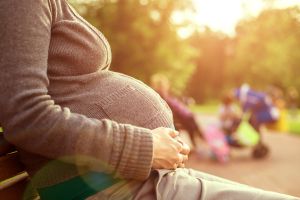A recent study from the Harvard School of Public Health set out to determine if there is any association between exposure to particulate matter air pollution during pregnancy and the odds that her child will develop any form of autism spectrum disorder (ASD). Their findings were published in the journal Environmental Health Perspectives which is published by the National Institute of Health Sciences. The authors show that expectant mothers’ exposure to air pollution has a greater association with occurrences of autism, especially if it occurs during the third trimester of pregnancy.
The senior author of the study, Dr. Marc Weisskopf, Associate Professor of Environmental and Occupational Epidemiology, states that while it may have been hypothesized that particulate matter contributes to the risk of autism disorders, “The specificity of our findings for the pregnancy period, and third trimester in particular, rules out many other possible explanations for these findings.”
The study included 116,430 nurses aged 25-43 (at the beginning of the study in 1989) who filled out questionnaires every-other-year, reporting any autism diagnoses in their families and to report on the addresses where they resided during pregnancy. The final study included 245 cases of ASD and 1522 controls born 1990 through 2002. The quality of the air and size of the particulate matter that participants were exposed to was calculated using the EPA’s Air Quality System, which is based off of data from 10,000 different monitoring stations from various geographic regions.
As it turns out, this study disproves the link between occurrences of autism spectrum disorder and exposure to particulate matter before or after pregnancy. And while evidence from this study shows that exposure over the entire pregnancy makes a difference in the prevalence of autism spectrum disorder, it shows that particulate matter exposure during the third trimester has the largest influence on the occurrence of autism. This is very compelling news in the arena of autism spectrum disorder research because the cause of autism are not known and contributing factors are under dispute. In addition to what science understands as the contribution of genetics to occurrences of autism spectrum disorder, the effects of particulate matter exposure during the gestational period can now be further studied to help develop guidelines for expectant mothers. So if you’re expecting a child, now is the time to ensure that you limit your exposure to particles PM2.5 and smaller, especially if you’re nearing your third trimester of pregnancy.
Autism’s prevalence in our society is profound, and has shown to affect more and more children every time surveillance is conducted. The Centers for Disease Control studies show a continued increase in the prevalence of autism spectrum disorder; finding 1 in 68 children afflicted with ASD in 2010, up from 2008 when 1 in 88 were found to be affected. Further, the rate has continually increased since the first year data was collected in 2000, where only 1 in 150 children were found to be affected. While prevalence of autism spectrum disorder is reported to occur in all subsets of American society, it has been found to be almost 5 times more common among boys than girls.
It is important to keep in mind that the study was looking at exposure to particles of a particular size; those with a diameter between 2.5 to 10 microns. Particles are often measured within two categories; as PM2.5 (smaller particles) or PM10 (larger particles). Particulate matter is dangerous to the health because it can enter the respiratory system. Particles at PM2.5 are approximately 1/30th the width of the average human hair and are more dangerous because their small size enables them to embed deeper within the lungs. Anything PM2.5 or smaller are considered to be ‘fine’ particles. Fine particles include toxic organic compounds and heavy metals made from automobile exhaust, forest fires and burning yard waste, and the process of purifying and process metals.
The authors of the study do suggest that air pollution may be a modifiable risk factor for autism, but they stop short of making specific recommendations for methods of prevention or modification of particulates in the air at this time. If you are already a customer of Austin Air, and are wondering about what size particles your Austin Air Cleaner helps to filter, take comfort in knowing that our machines can filter 99.97% of particles PM0.3 and larger from the air. Austin Air’s machines use HEPA, or High Efficiency Particulate Air, filters which are a blend of fibers that creates a mat which screens out particulates using forced air.
More information on autism can be found through many trustworthy resources on the web, notably the Centers for Disease Control page for autism spectrum disorder research or through partial funders of the study, such as the advocacy group Autism Speaks. The full study from Environmental Health Perspectives can be found here.
